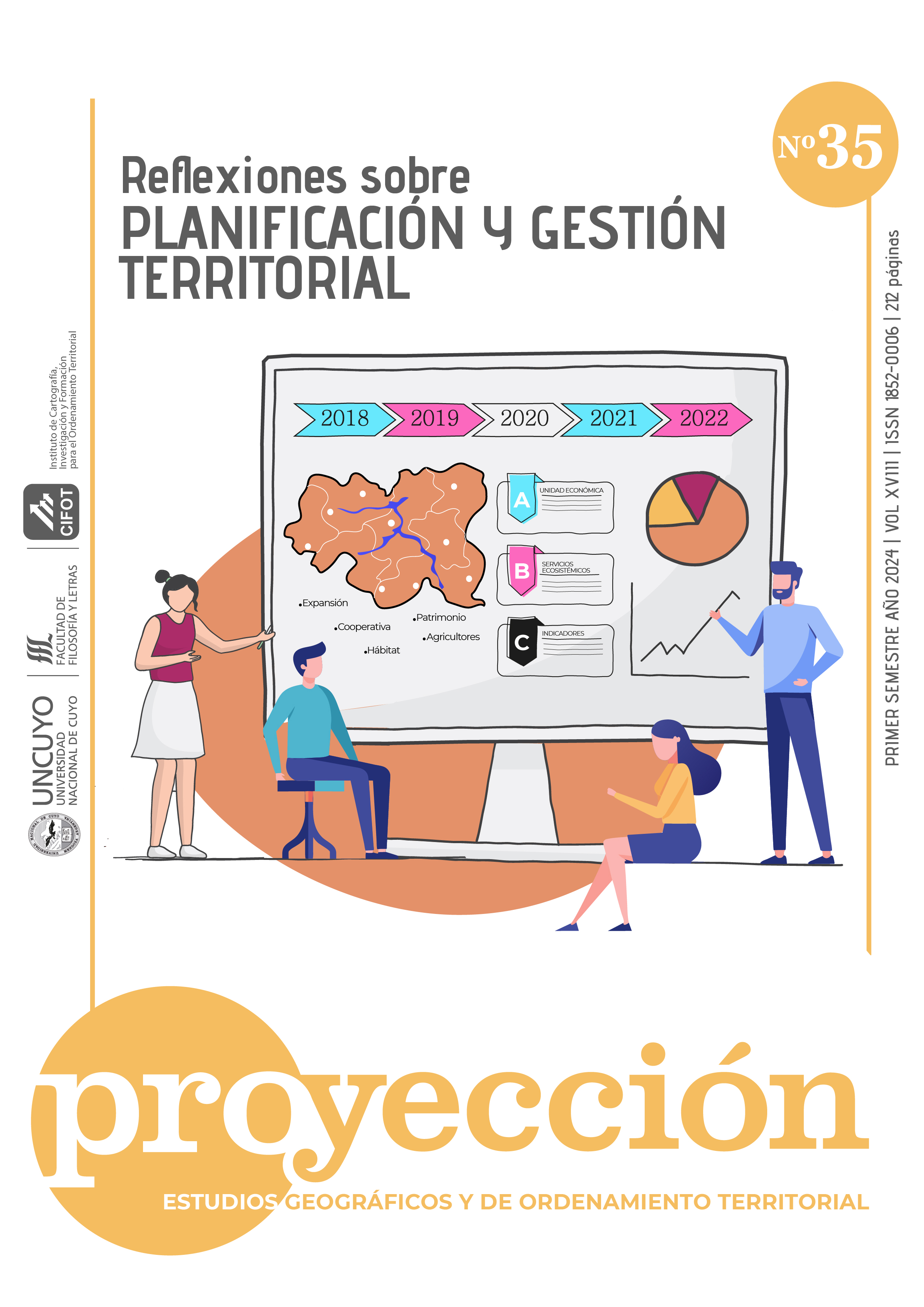Propuesta de Zonificación Ecológica Económica en la Parroquia Aláquez, Ecuador
DOI:
https://doi.org/10.48162/rev.55.051Palabras clave:
planificación territorial, desarrollo sustentable, reestructuración territorialResumen
El presente trabajo de investigación aborda la importancia de la planificación territorial y el uso adecuado del territorio, como factores fundamentales para el desarrollo sostenible en la parroquia rural de Aláquez. En particular, se enfoca en la segmentación de las Unidades Ecológicas Económicas (UEE) y el aprovechamiento responsable del suelo, así como en el papel de la Zonificación Ecológica Económica (ZEE) como instrumento de planificación territorial. El resultado final del estudio es un mapa que muestra la propuesta de zonificación ambiental económica de Aláquez, que no se había realizado hasta este momento y que ayudará a una toma de decisiones adecuada en la planificación y ordenamiento territorial. Se descubrió que las nuevas áreas adecuadas para la agricultura cubren el 10,73% del territorio total de la parroquia. Las zonas de fragilidad, con un ecosistema bajo, cubren un 7,57%, mientras que las más frágiles representan el área más grande, alcanzando el 37,45% del territorio. Las actividades antrópicas cubren el 2,76% del territorio de Aláquez. Las conclusiones enfatizan la necesidad de utilizar de manera efectiva herramientas de planificación territorial y el control adecuado para proteger al medio ambiente y a los ciudadanos del riesgo de desastres naturales.
Citas
Conferencia Europea de Ministros Responsables de la Ordenación del Territorio. (1983). Carta Europea De Ordenación Del Territorio. Torremolinos.
Consejo Nacional De Competencias. (2018). Capacidad Institucional de los GAD Parroquiales Rurales. CNC.
Consejo Nacional de Competencias. (2018). Capacidad Institucional e los GAD Parroquiales Rurales. CNC.
Gobierno Autonómo Descentralizado de Aláquez. (2012-2023). Plan de Desarrollo y Ordemiento territorial 2012-2023. Aláquez.
Herrera, L., & Pecht, W. (s/f). Crecimiento Urbano en América Latina.
Lavell, A. (2001). Sobre la Gestión del Riesgo: Apuntes hacía una Definición. Obtenido de https://desastres.unanleon.edu.ni/pdf/2004/mayo/PDF/SPA/DOC15036/doc15036-contenido.pdf
Ley Orgánica de Ordenamiento Territorial, Uso y Gestión del Suelo. (2016).
Maisa, Rojas. (2021). Hay que cambiar la forma en que nos relacionamos entre nosotros y con la naturaleza. Chile.
Malaverri, L. F. (2011). Procesamiento De Imágenes De Satélite Y Modelamiento ZEE. Lima.
Meyhuay, T. M. (2012). Propuesta de Zonificación Ecológica Económica (ZEE) Del Distrito De Tarica. Huaraz.
Ministerio del Ambiente, Agua y Transición Ecológica. (2019). Conociendo la Zonificación Ecológica y Económica. LIMA: Ministerio el ambiente (MINAM).
ONU. (2015). Marco De Sendai Para La Reducción Del Riesgo De Desastres 2015-2030. SENDAI.
ONU. (2016). Nueva Agenda Urbana.
Secretaría Nacional de Gestión de Riesgos y Emergencias. (2022). Lineamientos para la gobernanza de las gestión del riesgo de desastres en los gobiernos autónomos descentralizados municipales y metropolitanos.
Sociedad Geográfica de Lima. (2016). Ordenamiento Territorial Y Desarrollo Rural. LIMA.
Descargas
Publicado
Cómo citar
Número
Sección
Licencia
Derechos de autor 2024 Ángel Velásquez Cajas, Diego Albuja Brito, Alexis Sánchez Chiluisa Sánchez Chiluisa

Esta obra está bajo una licencia internacional Creative Commons Reconocimiento-NoComercial-CompartirIgual 3.0.
La revista Proyección establece las siguientes condiciones de publicación para los/as autores/as:
- Los/as autores/as conservan los derechos de autor y ceden a la revista el derecho de publicación bajo la Licencia Creative Commons Atribución-No Comercial-CompartirIgual 3.0 No portada (CC BY-NC-SA 3.0) que permite a terceros copiar, distribuir, exhibir y ejecutar la obra citando siempre la fuente y los datos de autoría según la norma prevista por la Revista Proyección. Esta licencia no permite el uso de la obra con fines comerciales.
- Todos los trabajos publicados por Proyección, Estudios Geográficos y de Ordenamiento Territorial serán bajo la modalidad de gratuidad para autores/as y lectores/as.




























